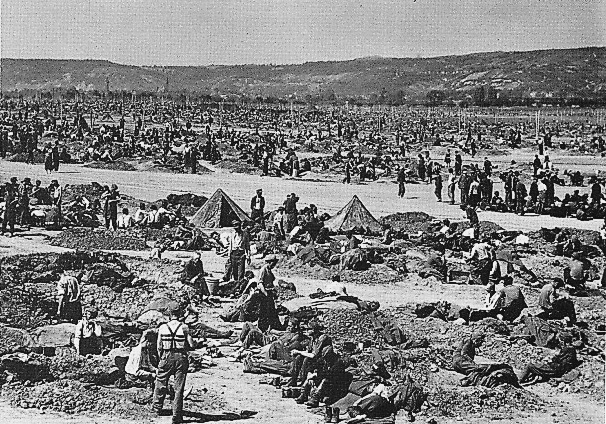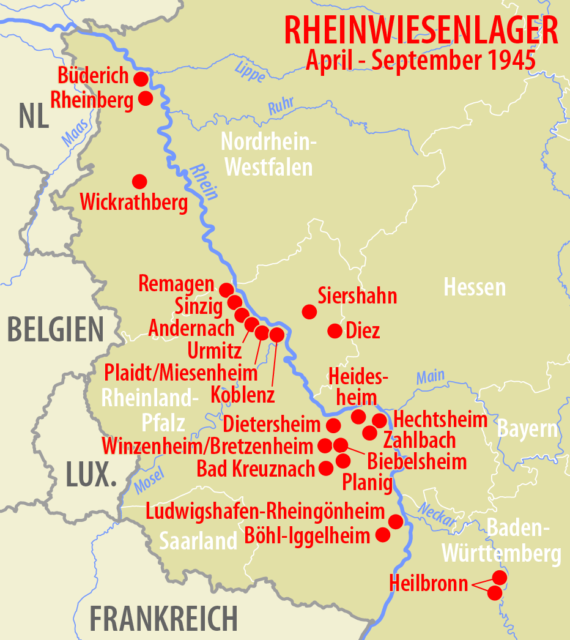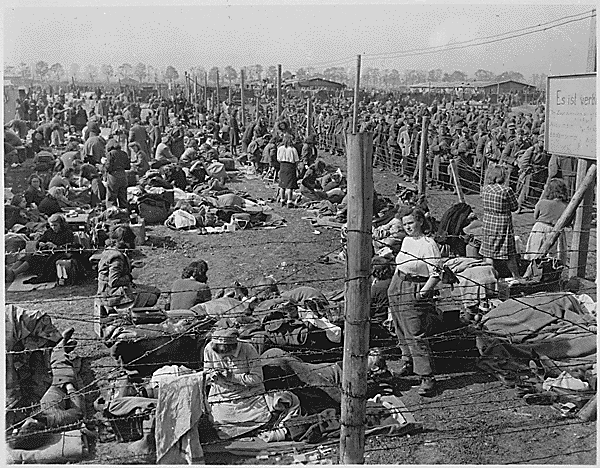During World War II, prisoners of war (POWs) were frequently held in camps. The Geneva Convention outlined the guidelines for their treatment. However, in camps situated in Allied-occupied Germany, POWs were deliberately categorized in a manner that enabled the Allies to get around these regulations.
These camps, known as the Rheinwiesenlager and formally called Prisoner of War Temporary Enclosures (PWTE), are rarely discussed.
Allied success in Europe following the D-Day landings

Following the success of D-Day, the Allied forces moved through occupied territories and advanced into Germany. Despite encountering pockets of resistance from enemy troops, many soldiers surrendered, making the Allies responsible for their care.
Initially, the custody of prisoners was divided between the British and American forces. However, by early 1945, the British refused to accept more into their existing camps. As a result, the responsibility fell entirely to the Americans, who faced the challenging task of accommodating the growing number of German POWs as the Allied advance continued.
To address this issue, the US Army established the Rheinwiesenlager, a network of prison camps spread across Allied-occupied Germany. These camps started operations in April 1945, and their importance grew after Germany’s surrender the following month, as they played an important role in preventing possible uprisings against the Allied occupation.
Layout of the Rheinwiesenlager

The Rheinwiesenlager was established on West German soil under Allied control. Positioned on agricultural land near railway tracks, these sites were enclosed by barbed wire fences. The area was divided into smaller sections, each intended to hold 5,000-10,000 people. Despite this design, many camps became severely overcrowded, accommodating over 100,000 prisoners, with estimates suggesting a total population between one and 1.9 million.
Detainees at the Rheinwiesenlager were primarily ordinary soldiers of the Wehrmacht, while higher-ranking German officials, SS members, and other prominent figures were relocated elsewhere.
There were no shelters for living quarters

A large portion of the camp’s internal organization was overseen by the prisoners themselves, who took on responsibilities such as labor, medical care, and food preparation. Control within the compounds was frequently entrusted to fellow inmates, who were given extra rations to help maintain order and enforce rules within the confines of the barbed wire.
Though the camps were equipped with kitchens, medical facilities, and administrative offices, these spaces were not designated as living quarters. Instead, most detainees had to improvise shelters, often by digging into the ground.
Disarmed Enemy Forces (DEFs)

The harsh conditions faced by these prisoners, made clear by their improvised outdoor shelters, highlighted the severe treatment inflicted upon them by their captors. This mistreatment was allowed due to their designation as Disarmed Enemy Forces (DEFs) rather than prisoners of war (POWs).
Prior to the establishment of the Rheinwiesenlager, Gen. Dwight D. Eisenhower introduced this new classification, effectively stripping DEFs of the protections granted to POWs by the Geneva Convention on Prisoners of War (1929). The American forces defended this decision by arguing that these individuals belonged to a state that no longer existed, thus justifying various forms of mistreatment.
Was the inhumane treatment intentional?

Under this classification, authorities could “legally” block Red Cross visits and withhold humanitarian aid. The Geneva Convention was specifically designed to prevent the abuse of POWs, but without its protections, DEFs were exposed to mistreatment with little accountability for their captors.
These events have led many to view the actions of Eisenhower and those in charge of the Rheinwiesenlager as intentional acts of inhumane treatment.
Rheinwiesenlager conditions

Overall, the conditions in the Rheinwiesenlager were horrific.
Historian Stephen Ambrose investigated many claims made about the camps, and concluded, “Men were beaten, denied water, forced to live in open camps without shelter, given inadequate food rations and inadequate medical care. Their mail was withheld. In some cases prisoners made a ‘soup’ of water and grass in order to deal with their hunger.”
Begging for more food wasn’t an option either, as those prisoners were often shot as “escapees,” should they have gotten near the barbed wire fences. Reports also claim locals would be shot if they tried to provide aid to the POWs.
Legacy of the Rheinwiesenlager

Given the living conditions of the Disarmed Enemy Forces, it’s no wonder the death toll was high. However, because they weren’t officially known as prisoners of war, few records were kept. Instead, many Germans would simply go missing from roll call, never to be seen again.
Due to the lack of records, death estimates vary, depending on who you ask. The official statistics from the US Army state that around 3,000 people died while in the Rheinwiesenlager. German estimates, however, provide a figure of 4,537.
James Bacque, the author of Other Losses: An Investigation Into the Mass Deaths of German Prisoners at the Hands of the French and Americans After World War II, alleges the number is between 100,000 and one million. However, his claims have been discredited by his peers.
More from us: The Battle of Cologne Saw a Legendary Standoff Between a Panther and a Pershing
New! Want to become a trivia master? Sign up for our War History Fact of the Day newsletter!
Regardless of the overall death toll, the treatment of DEFs has been heavily criticized, despite it going largely unnoticed in more recent years. Many have pointed out that the Americans violated a host of international laws on the treatment of prisoners, even though they weren’t classified as POWs, particularly in their feeding – or lack thereof.
